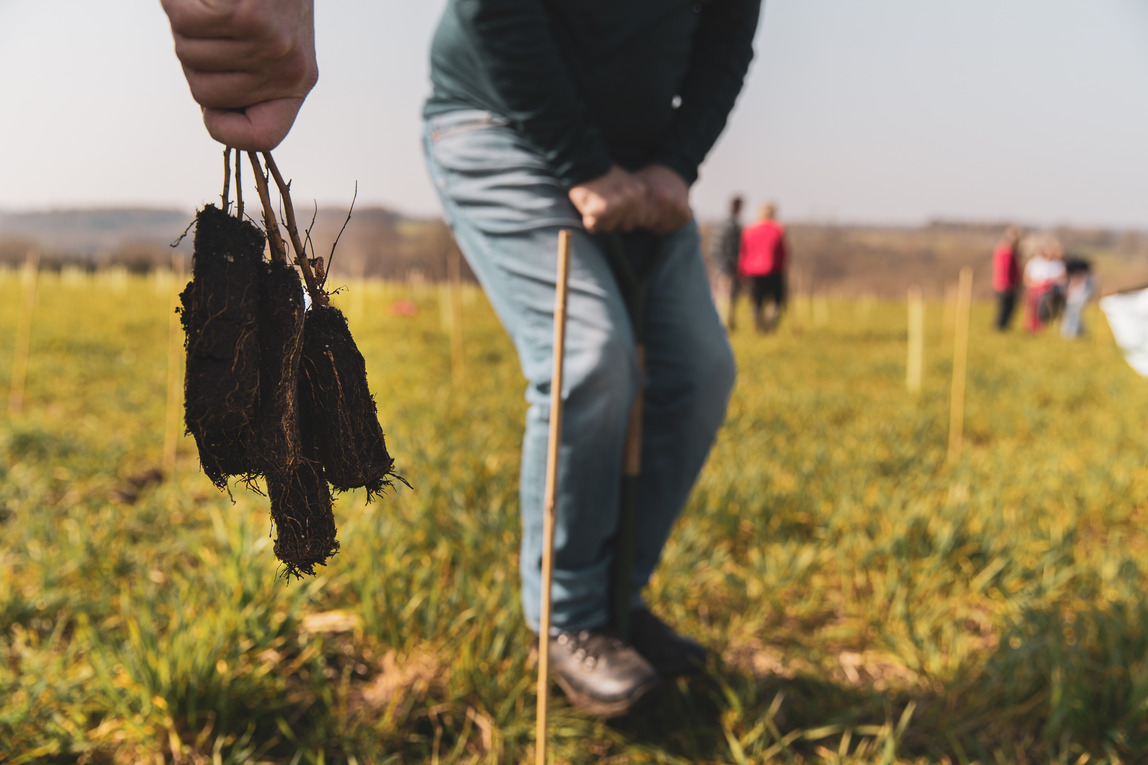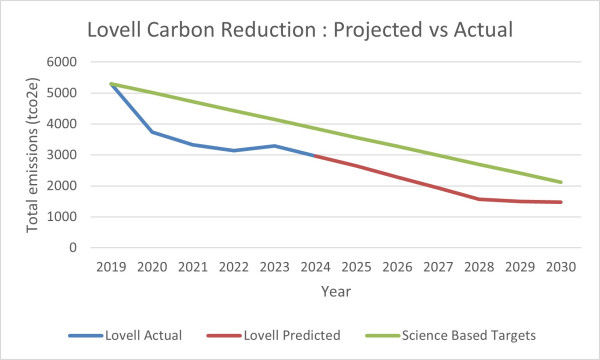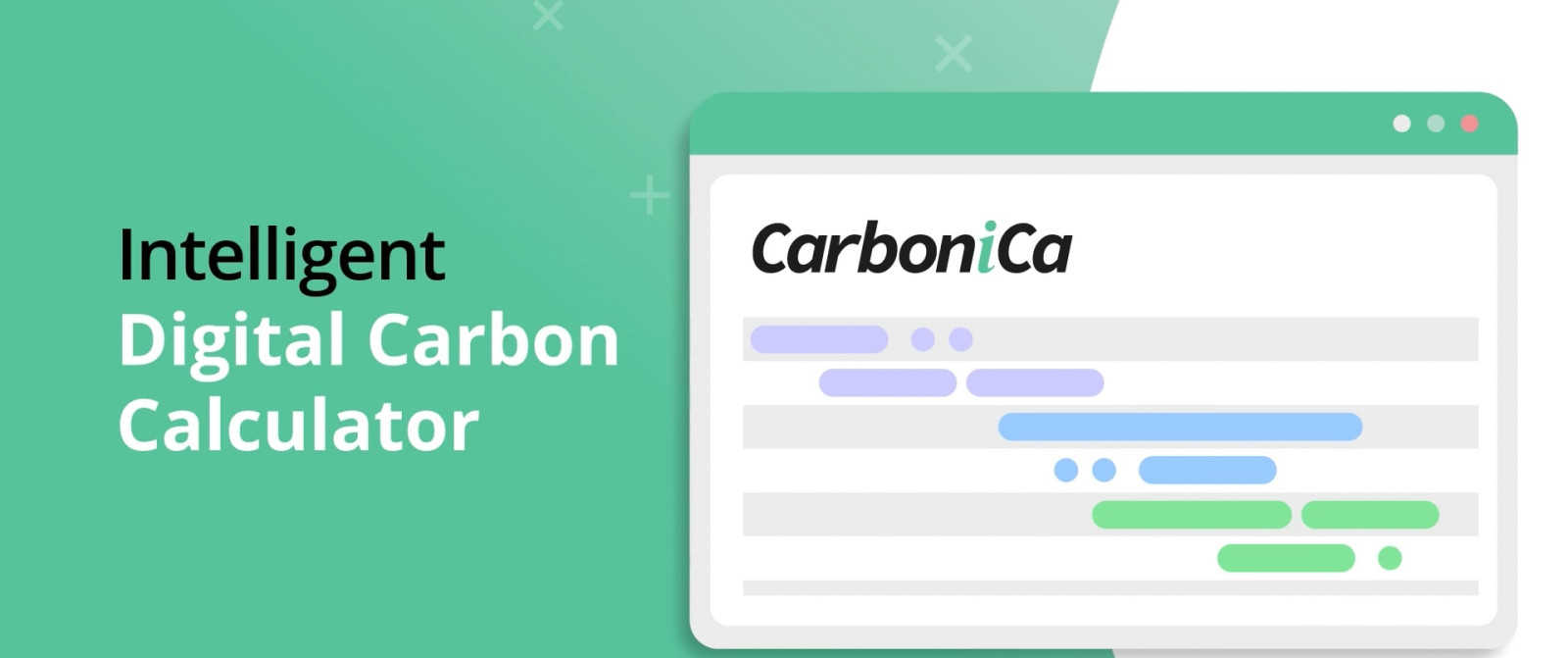Emissions reduction targets
In order to continue our progress to achieving Net Zero, we have adopted the following carbon reduction targets.
To reduce Scope 1 & 2 emissions by 30% by 2025 against a 2019 baseline year, with an equal target for Scope 3 emissions. In addition, we have a target to reduce our carbon emissions by 60% by 2030 against a 2019 baseline year.
Progress against these targets can be seen in the graph below:
The graph below displays the initial carbon reduction necessary to reach a 60% reduction against our 2019 baseline by 2030. The remaining emissions will be offset to achieve net-zero.
Carbon reduction projects
The following environmental management measures and projects have been completed or implemented since the 2019 baseline. The carbon emission reduction achieved to date equate to 2,340 tCO2e against the 2019 baseline, and the following measures will be in effect when performing the contract.
We have previously had Science Based Targets agreed and in place against a 2018 baseline year but due to our progression in reaching these targets, we have revisited the targets to push the business further in carbon reduction. The targets changed from an 11% reduction in Scope 1 & 2 emissions by 2025 and 9% in Scope 3 by 2025 against a 2018 baseline year, to a 30% reduction in Scope 1 & 2 and 30% reduction in Scope 3 by 2025 against a 2019 baseline year.
After successfully trialling HVO fuel throughout the business, we made the decision to become HVO exclusive for all Lovell operated plant and machinery where supply allows for it. HVO is a cleaner fuel when burnt and the carbon output is significantly lower than diesel. The carbon emission reduction achieved by the scheme in 2024 equates to approx. 2,480 tCO2e compared to our 2019 baseline.
We have also carried out trials of Shell GTL fuel, electric telehandlers and hybrid generators. We have seen the successful use of hybrid generators now seen across many of our sites, contributing to reductions in fuel consumption, emissions, and noise pollution. As of 2024, it is mandatory that all new sites using a generator 40kVa or above will be assessed to check if a hybrid battery generator system will be beneficial.
The addition of EV and hybrid vehicles to the company car list and removal of petrol and diesel vehicles has resulted in an uptake of electric vehicles within the fleet and therefore a reduction in carbon emissions. Additionally, we have introduced a salary sacrifice scheme for EV and hybrid vehicles to further encourage the uptake in these vehicles. We have also committed to installing EV charging points on site and at our offices to support the changing landscape of the UK.
In 2024 we launched a further scheme offering staff an annual cash payment as an incentive to take up an electric vehicle. This is expected to further reduce our emissions over the next few years.
We are working towards 100% of our operational electricity to site being from REGO (Renewable Energy Guarantees of Origin) sources.
We have engaged with social enterprise Community Wood Recycling (CWR) who collect timber waste. By collecting wood waste, CWR can maintain stock at their network of reclaimed timber stores, produce and sell a range of wooden products and help to fight unemployment by giving workplace opportunities to disadvantaged people. This helps reduce our waste and contributes to a circular economy. 197 tonnes of wood were reused and recycled via CWR in 2023.
We utilise a pallet collection service provided by Pallet Loop for reuse and repair, reducing the amount of waste and further supporting a circular economy. Some 23,000 pallets were returned in 2024, up from 13,000 in 2023.
Morgan Sindall (our parent company) and Blenheim Estate have partnered to create nine new woodlands, planting more than a quarter of a million trees. The woodlands will of course also act as a carbon sink, sequestering 22,000 tCO2e over the next 25 years, as well as improving the biodiversity, and quality of soil, air, and water within Oxfordshire.
Morgan Sindall have also invested in peatland restoration in the Great North Bog. The carbon sequestration achieved via this project is yet to be determined.
Morgan Sindall Group have developed a Carbon Calculator, CarboniCa, that is used to calculate the embodied carbon of our projects. The tool considers the carbon footprint of our materials, operations and the use of the homes until end of life.









